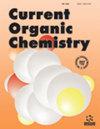Multicomponent 3D-printed Collagen-based Scaffolds for Cartilage Regeneration: Recent Progress, Developments, and Emerging Technologies
IF 2.1
3区 化学
Q3 CHEMISTRY, ORGANIC
引用次数: 0
Abstract
: Cartilage tissue presents challenges in terms of repair and regeneration due to its inherent limitations in self-healing and the scarcity of available donors. Cartilage damage can result in the development of joint problems characterized by symptoms, such as pain, swelling, and osteoarthritis. Collagen scaffolds are extensively used as biomimetic substances for cartilage engineering due to their ability to offer structural, biochemical, and mechanical signals for chondrocytes. Nevertheless, traditional techniques for producing collagen scaffolds frequently yield inadequate pore architecture, diminished mechanical robustness, and restricted form accuracy. Hence, 3D printing is a developing method that can surpass these restrictions by allowing accurate manipulation of the shape, porousness, and makeup of the scaffold. 3D printing has the capability to include various materials and cells in the scaffolds, resulting in the production of intricate and personalized tissue structures. This research examines the latest progress in utilizing 3D printing to create collagen scaffolds for the purpose of regenerating cartilage. This text discusses the different sources of collagen, methods of cross-linking, techniques for printing, and strategies for post-processing that are employed to improve the performance of scaffolds. Furthermore, it discusses the difficulties and potential future paths of utilizing 3D printing to create collagen scaffolds for the purpose of regenerating cartilage.用于软骨再生的多组分三维打印胶原基支架:最新进展、发展和新兴技术
:软骨组织在自我修复方面存在固有的局限性,而且可用的供体稀缺,因此在修复和再生方面面临挑战。软骨损伤会导致以疼痛、肿胀和骨关节炎等症状为特征的关节问题。胶原支架可为软骨细胞提供结构、生化和机械信号,因此被广泛用作软骨工程的生物仿生物质。然而,生产胶原支架的传统技术经常会产生孔隙结构不足、机械坚固性降低和形状精度受限等问题。因此,三维打印是一种新开发的方法,它可以精确地操纵支架的形状、孔隙度和构成,从而超越这些限制。三维打印能够在支架中加入各种材料和细胞,从而制造出复杂的个性化组织结构。本研究探讨了利用三维打印技术制造胶原支架用于软骨再生的最新进展。本文讨论了胶原蛋白的不同来源、交联方法、打印技术以及为提高支架性能而采用的后处理策略。此外,它还讨论了利用三维打印技术制造胶原支架用于软骨再生的困难和未来可能的发展方向。
本文章由计算机程序翻译,如有差异,请以英文原文为准。
求助全文
约1分钟内获得全文
求助全文
来源期刊

Current Organic Chemistry
化学-有机化学
CiteScore
3.70
自引率
7.70%
发文量
76
审稿时长
1 months
期刊介绍:
Current Organic Chemistry aims to provide in-depth/mini reviews on the current progress in various fields related to organic chemistry including bioorganic chemistry, organo-metallic chemistry, asymmetric synthesis, heterocyclic chemistry, natural product chemistry, catalytic and green chemistry, suitable aspects of medicinal chemistry and polymer chemistry, as well as analytical methods in organic chemistry. The frontier reviews provide the current state of knowledge in these fields and are written by chosen experts who are internationally known for their eminent research contributions. The Journal also accepts high quality research papers focusing on hot topics, highlights and letters besides thematic issues in these fields. Current Organic Chemistry should prove to be of great interest to organic chemists in academia and industry, who wish to keep abreast with recent developments in key fields of organic chemistry.
 求助内容:
求助内容: 应助结果提醒方式:
应助结果提醒方式:


